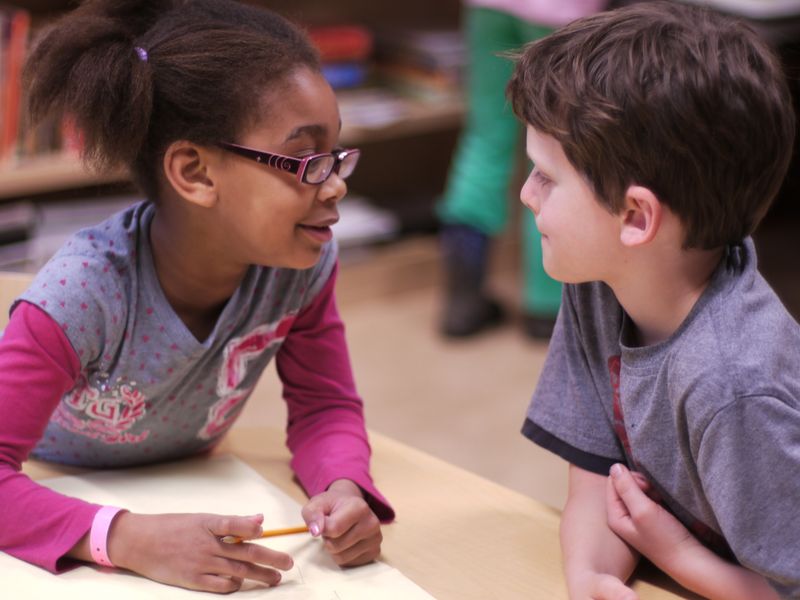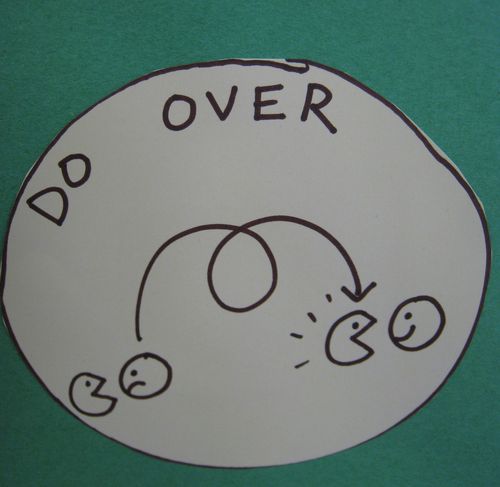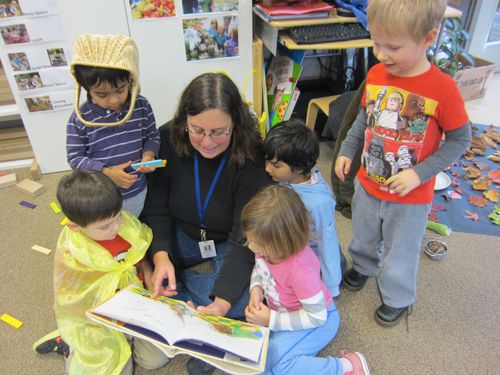Opal School Online — a sample!

Specific conflict resolution strategies are introduced or reflected on regularly throughout the year and practiced daily – if not hourly! Our image of the child – in fact, our image of the human being – includes the belief that ALL behaviors are attempts at belonging and connection and making meaning. Sometimes we mis-fire. Our efforts at building relationships are full of “oopsie” moments. 4-year-old Stella explained this well after she broke the classroom agreement of being safe and kind to one another:
I punch-ded Ruby today. It was an accident – ly. But it was an oopsie moment. I had an oopsie moment. Acause in my classroom we don’t punch. We had to solve the problem. So I had to sit on the bench and my brain did something magical. I just thought ‘there can be two mommies!’ It just popped right in my brain. And everything just snapped together.
Stella beamed with pride as she recounted this incident. Not shamed for having made a mistake, but confident in the magic capacities of her powerful brain. And important in the context of school: ready to get back to the business of the classroom. Stella had used the strategy of taking a break, and was able to re-enter the play with fresh ideas for a do-over. Ruby as well, had most likely been supported to use a strategy such as giving Stella a clear message: “I don’t like it when you hit me!”
Neuroscience is clear: the social-emotional and the cognitive parts of our brains are intertwined. But often the focus on cognitive development (read: academic achievement) that our culture (parents! Administrators! Policy makers and testing companies!) so highly values causes adults to deliver quick, often punitive fixes that work in the short run but do not support long-term healthy social-emotional growth OR the academic achievement that is possible when that is in place.
What might happen if we began to act on the assumption that children want to belong, that they deserve to belong, and that they, like all of us, are imperfect but worthy? What if we practice at the same time working from an assumption that learning and wanting to learn is as natural and pleasurable as breathing and therefore no less desirable to constrict in any way?
Here is a sampling of strategies that our school community has developed over the years:
- Give a clear message (ex. “I don’t like it when you say I can’t play. It hurts my feelings.”
- Give a gentle reminder of our agreements (ex. “Remember to not have a side conversation during Gathering.”)
- Ask a question (ex. “Why are you not listening to me?”)
- Walk away/Take a break to calm down
- Ask for help from a teacher, a friend, or another adult
- Let it [the problem] go. Decide to not give it energy.
- Make a new agreement together (ex. “How about next time…”)
- Do over – getting the chance to re-do the situation with new information (ex. Adjusting tone of voice, asking a question, sharing an idea to avert the problem, etc.)
These are not the only strategies we might introduce, and they might be different from classroom to classroom and for different grade levels. Not all strategies may be introduced in a given year.
Strategies are introduced over time, with lots of other support including dialogues, conferring with individual children, puppet theaters, practicing a strategy in absence of conflict and much, much more. Videos included in this section of Opal Online feature a variety of moments between teachers and children as they work to put these strategies into action.
It is vitally important to understand that these strategies do not stand alone or work in isolation. Teachers would not ask a child to “do a do-over” without considering first who the child is and what the situation is and whether or not they have a clear picture of why that particular strategy would be meaningful.
For reflection:
What strategies do you regularly use in your conflict resolutions and interventions? If you named these strategies, what might you call them?
When do you observe children to be most engaged in conflict resolution?
Consider a child whose behaviors challenge you the most. How can you frame these struggles as failed attempts at belonging and relationship? From this position of empathy, what strategies might support this child to be more successful?
Consider the conflicts presented in your favorite children’s literature. How might you use the conflicts in books to engage your students in creating the language of conflict resolution strategies for themselves? As the character’s conflicts resolve, what connections can children make to their own struggles and resolutions?
_______________________________



